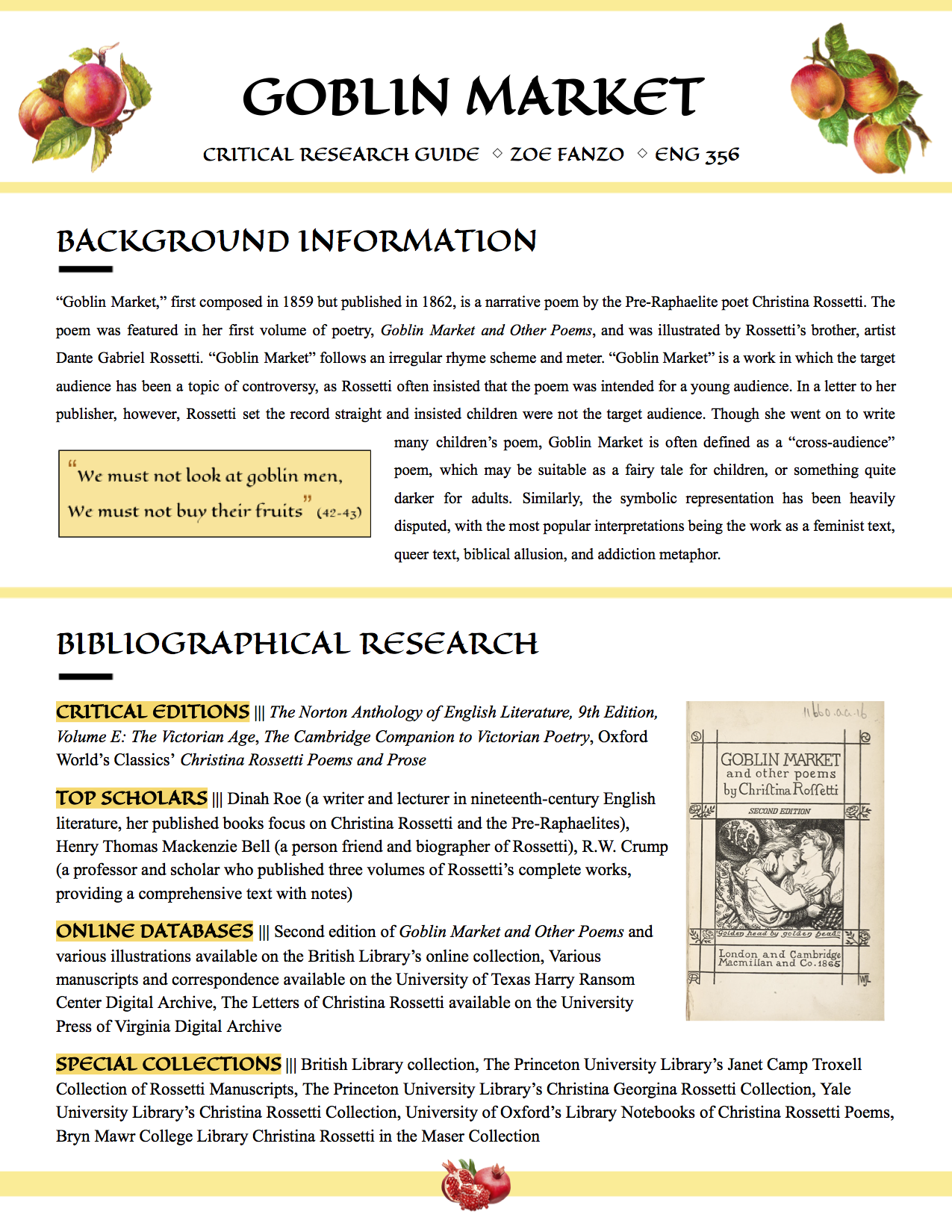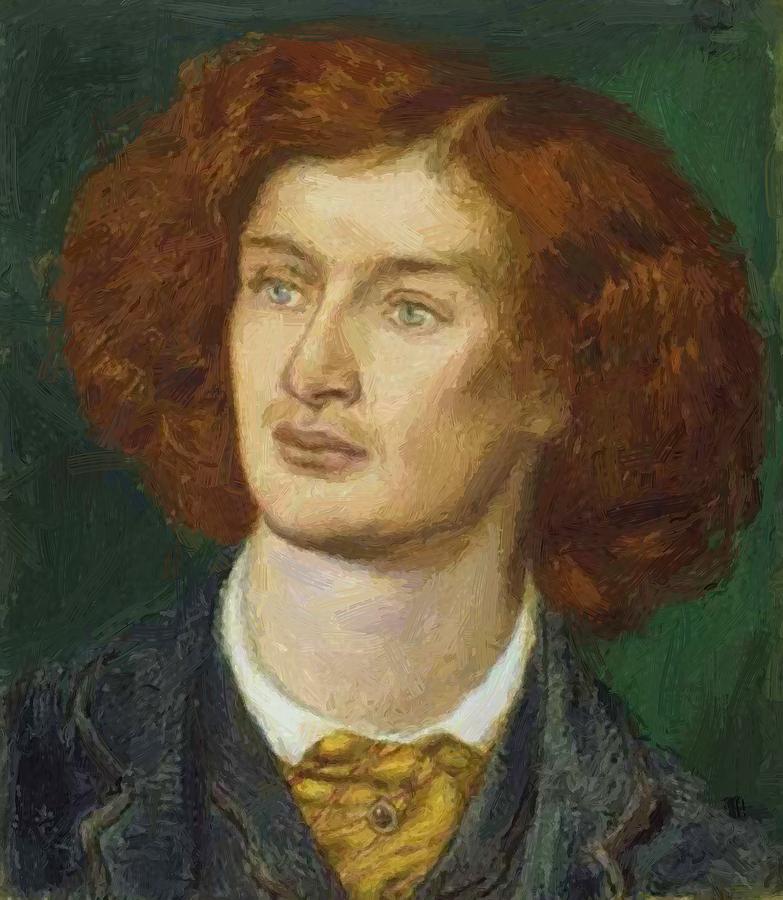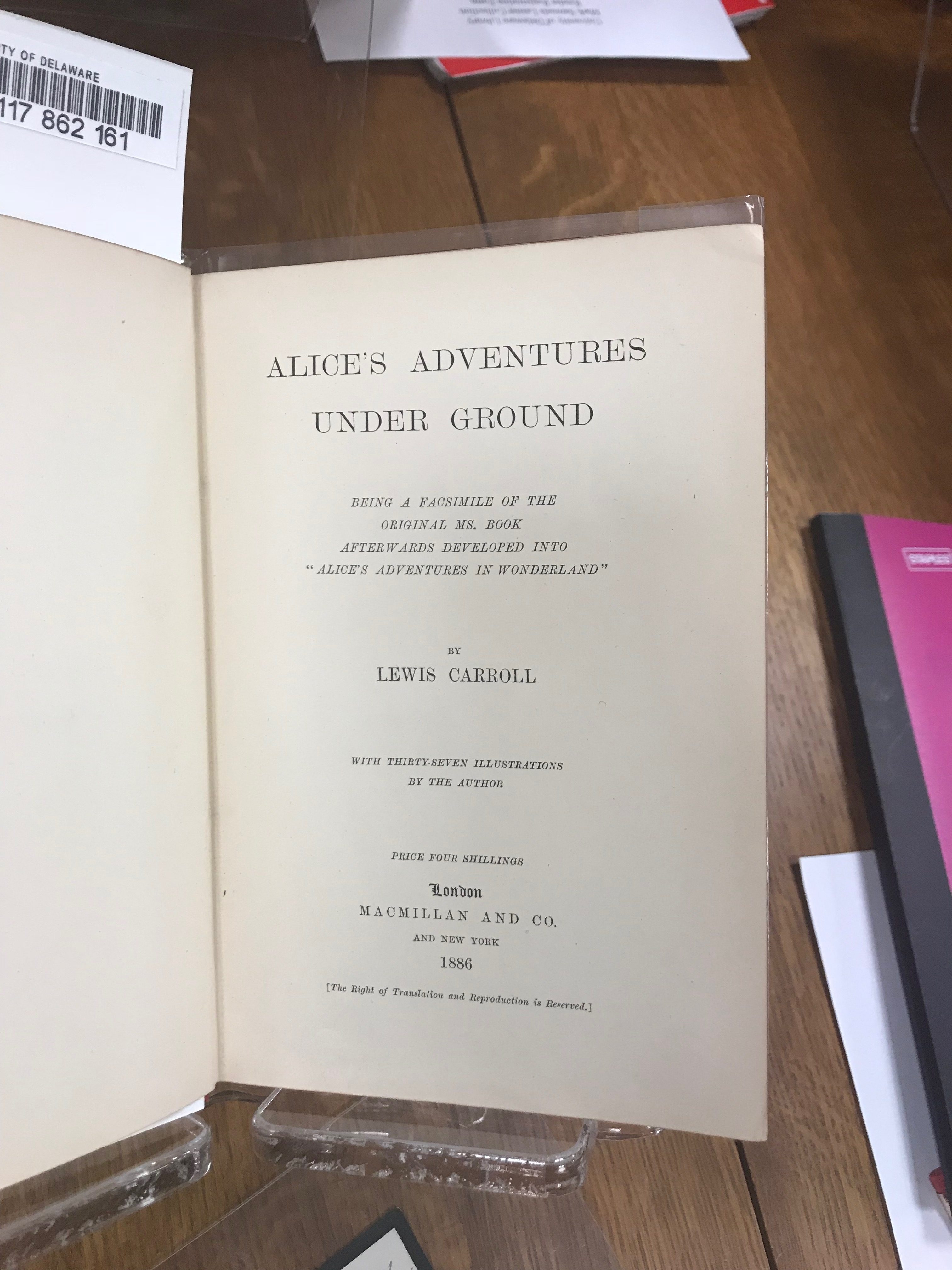William Morris News from Nowhere or, An epoch of rest
During our visit to the University Of Delaware Library our class got the special opportunity of going to the Mark Samuels Lasner collection. This special collection had thousands of archives, particularly books focused on the British literature during the period of the 1850’s. There is an emphasis in his collection on the Pre Raphaelite Era. With decorations inspired by William Morris art, his love for this era signs through his collection. The Pre Raphaelite era was a resistance movement in England involving the importance of art and how it should be represented. Through this movement, there was a group formed called the Pre Raphaelite brotherhood, they believed in art before the Renaissance period. They believed that art should be depicted naturalistic. This includes models being surrounded in nature and bodies being depicted authenticity, just as is. The Pre Raphaelite not only had influence on paintings but also literature, illustration, and all around design of the period. The real depiction of naturalism gave these artist platforms to express nature and humans with authenticity, still even showing its ugly parts.
An important artist from this brotherhood and a particularly important person for Mark Lasners collection was William Morris. William morris He became friends with painter and poet Dante Gabriel Rossetti who held the Pre- Raphaelite idealistic views of art. who persuaded him to give up architecture for painting and enrolled him among the band of friends who were decorating the walls of the Oxford Union. However, during the course of his time, he also took up art and devoted himself to working for an art commission; one which involved him to decorate a roof, depicting one of the scenes from ‘Le Morte D’Arthur’, along with several other artists. They shared a love of poetry, the Middle Ages, and Gothic architecture. When the Industrial Revolution began in Britain, William Morris was stuck in his traditional ways. He believed that art should be depicted realistically. In his group they would discuss things like how industrialization ruins the environment, how mass production creates shoddy, unnatural objects. This was seen through everything that Morris did, including his very detailed and illustrated books.
A Morris book in the Lasner collection is called News From NoWhere Or An Epoch Of Rest. This book was so important to Mark’s collection because it merely infphasized William Morris in the best way. The book binding was made in Vellum. Vellum is a type of material made from a skin of caf. It is processed and skinned down to be flexible material in order to keep a book together. This technique comes from 14th century book binding and carried through the 18th century. Most vellum bindings are simple and dont have decoration on the cover.. Although there are many ways artist like William Morris produced vellum covers with particular poise. Such as bindings with special cloth to keep the books together. You would be able to tie the books to hold them together with the string material. Although it did not do the best job of keeping the book together, it did its purpose. Preserving it from damage, and keeping it all into one page. The copy Mark Lasner made by Morris had the special binding which finding books in this material is considered special because this technique was so outdated and not used for very long only special books have this. The paper material is easy to get damaged.
What makes Mark Lasners copy so important is it is signed and dated by William Morris himself in 1893. Morris signed it to his friend Edward Burne Jones who was also a 18th century artist and a later participant of the Pre-Raphaelite brotherhood. This made the edition particular interesting because Morris personalized the copy for his friend. He emphasized on their idea of having ‘art for art sake’. It was present throughout the whole text. For example, the first letter of every paragraph is enlarged and in finer font. This purpose was to engage the readers into the text but also emphasise the importance of literature in a art sense. Another thing to take notice about this text was the bolding of the letters. When running your hands over the text, you are able to feel the intensity of the words mounted on the page. The illustration of these images were made through the process of woodblock printing. This technique started in China and East Asia and later on made its way to other countries. This process is used for printing, text, images or patterns. It would have to be done many times in order to make the pictures and text bold enough.
At our trip to NYU, the Fales library collection librarian Charlotte Priddle showed the class our respective interest and authors. There, I got another opportunity of seeing another work By William Morris. This book is called The Defence Of Guenevere and Other Poems by William Morris. What was interesting about the print of the book is the back. Where Morris gives the publication of the book special presentation. Morris writes the specific moment in which he wrote it, when it was published and illustrated. This just emphasis how important the aesthetics of William Morris books reflected. He even customized the publishing names in woodblock printing. The front of the book is unique because it has gold lettering. Made to stand out from other books and show its importance. Another thing to take notice was the edging of the book and the technique used to cut it. The books pages were made in Deckle edge that meant rough edged cut pages. In the 19th century books had to be cut and opened during the magnification to separate the pages. It was interesting to see that some of the pages in the original book were not yet cut open and represent the raw authenticity of this text itself.






